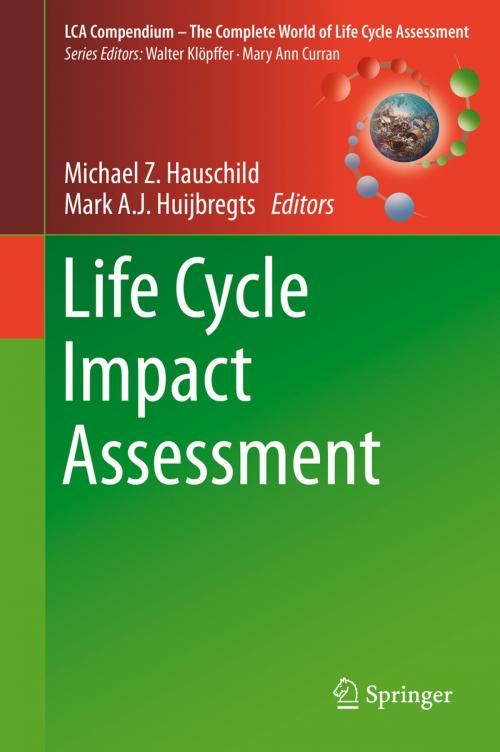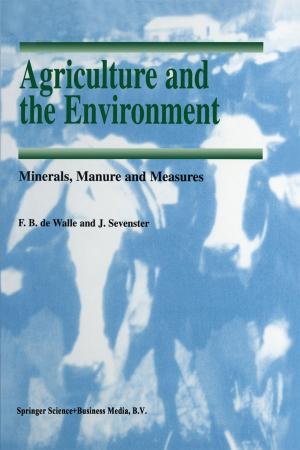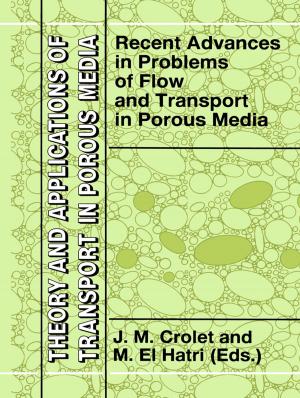Life Cycle Impact Assessment
Nonfiction, Science & Nature, Technology, Environmental, Science, Biological Sciences, Environmental Science| Author: | ISBN: | 9789401797443 | |
| Publisher: | Springer Netherlands | Publication: | March 24, 2015 |
| Imprint: | Springer | Language: | English |
| Author: | |
| ISBN: | 9789401797443 |
| Publisher: | Springer Netherlands |
| Publication: | March 24, 2015 |
| Imprint: | Springer |
| Language: | English |
This book offers a detailed presentation of the principles and practice of life cycle impact assessment. As a volume of the LCA compendium, the book is structured according to the LCIA framework developed by the International Organisation for Standardisation (ISO)passing through the phases of definition or selection of impact categories, category indicators and characterisation models (Classification): calculation of category indicator results (Characterisation); calculating the magnitude of category indicator results relative to reference information (Normalisation); and converting indicator results of different impact categories by using numerical factors based on value-choices (Weighting).
Chapter one offers a historical overview of the development of life cycle impact assessment and presents the boundary conditions and the general principles and constraints of characterisation modelling in LCA. The second chapter outlines the considerations underlying the selection of impact categories and the classification or assignment of inventory flows into these categories. Chapters three through thirteen exploreall the impact categories that are commonly included in LCIA, discussing the characteristics of each followed by a review of midpoint and endpoint characterisation methods, metrics, uncertainties and new developments, and a discussion of research needs. Chapter-length treatment is accorded to Climate Change; Stratospheric Ozone Depletion; Human Toxicity; Particulate Matter Formation; Photochemical Ozone Formation; Ecotoxicity; Acidification; Eutrophication; Land Use; Water Use; and Abiotic Resource Use. The final two chapters map out the optional LCIA steps of Normalisation and Weighting.
This book offers a detailed presentation of the principles and practice of life cycle impact assessment. As a volume of the LCA compendium, the book is structured according to the LCIA framework developed by the International Organisation for Standardisation (ISO)passing through the phases of definition or selection of impact categories, category indicators and characterisation models (Classification): calculation of category indicator results (Characterisation); calculating the magnitude of category indicator results relative to reference information (Normalisation); and converting indicator results of different impact categories by using numerical factors based on value-choices (Weighting).
Chapter one offers a historical overview of the development of life cycle impact assessment and presents the boundary conditions and the general principles and constraints of characterisation modelling in LCA. The second chapter outlines the considerations underlying the selection of impact categories and the classification or assignment of inventory flows into these categories. Chapters three through thirteen exploreall the impact categories that are commonly included in LCIA, discussing the characteristics of each followed by a review of midpoint and endpoint characterisation methods, metrics, uncertainties and new developments, and a discussion of research needs. Chapter-length treatment is accorded to Climate Change; Stratospheric Ozone Depletion; Human Toxicity; Particulate Matter Formation; Photochemical Ozone Formation; Ecotoxicity; Acidification; Eutrophication; Land Use; Water Use; and Abiotic Resource Use. The final two chapters map out the optional LCIA steps of Normalisation and Weighting.















